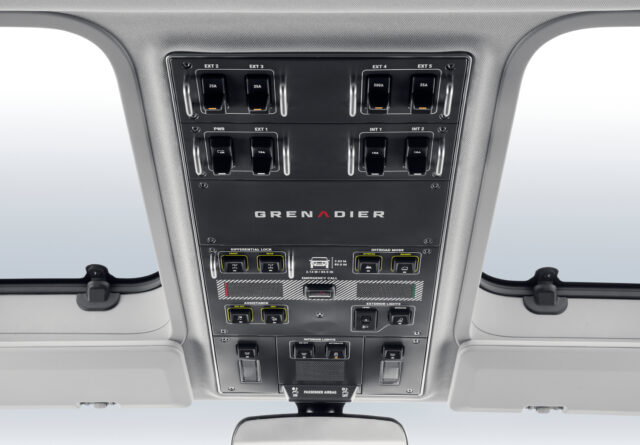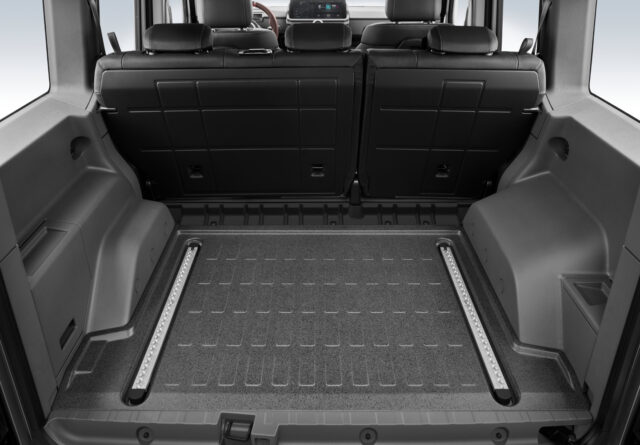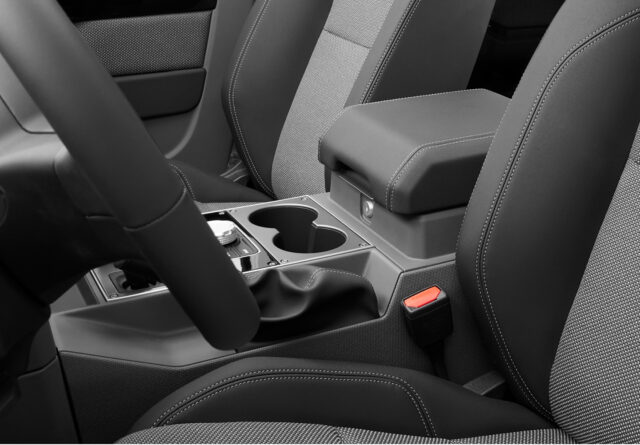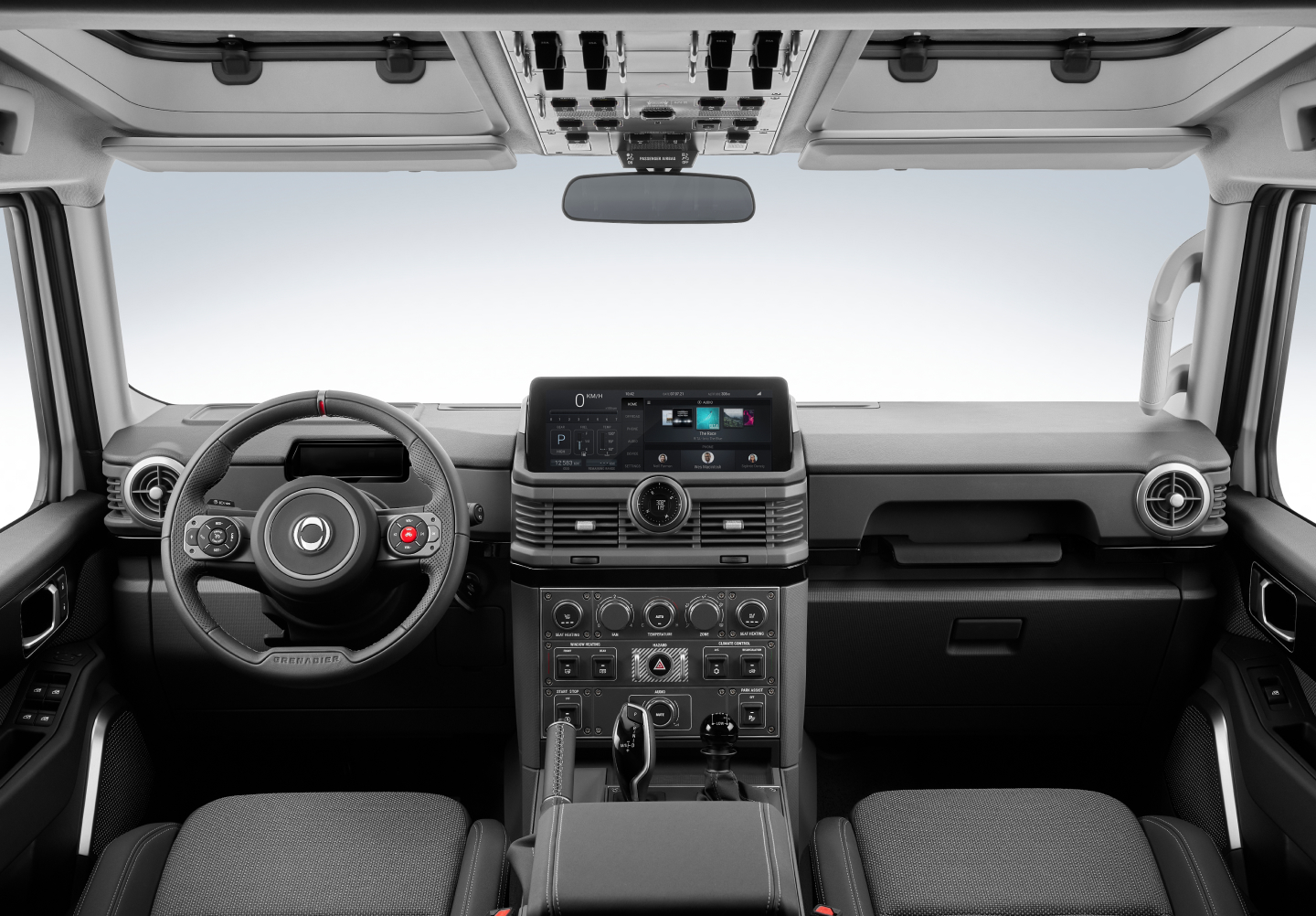“Comes with buttons, levers, and switches. Remember those?” Ugh, music to my ears. The era of overland vehicles synonymous with simplicity, minimal electrics, and wipe-clean interiors is over. Or is it? Dun, dun, dunn. The Ineos Grenadier might just be the most interesting and refreshing approach to vehicle manufacturing we’ve seen in a long time. Firstly, we all have to accept that with strict emission laws and endless red tape, it’s impossible to bring to market a new vehicle comparable to a classic Land Cruiser or Defender. I get that; we all want to protect the planet and engines need to be cleaner and more efficient. But what I can’t stand is the constant focus on luxury above all else. As an overlander, I’ll happily sacrifice some comfort in return for dependable simplicity, but it feels like 4WDs have become code for “big luxury tech machines.” Unfortunately, that’s what most people want these days, but not everyone, and I think the Ineos does a great job targeting this side of the market. Today we’re taking a look at the Grenadier’s interior, designed to be “hard wearing, practical, and simple.
This is an interior that can be hosed out, with dedicated drain plugs to remove water; now, that’s more like it. If you get a chance to check out the video linked above, I highly recommend it, but in short, Ineos wants to merge comfort with dependable simplicity. There’s nothing superfluous in the Grenadier, and when possible electronics were removed in favor of analog controls. Buttons, switches, and dials are clearly labelled and purposefully spaced, so they can be used with wet hands or gloves. In the interview Ineos’ Automotive Head of Design, Toby Ecuyer, explains the switches and buttons were somewhat inspired by the maritime and aviation sector, stating “there’s something quite cool about engaging all your switches; in your head you’re flying an aeroplane or behind the wheel of a ship.” Off-road controls are located overhead, thus separating them from the everyday console. This configuration was chosen as it helps drivers engage off-road functions easily, whilst also allowing co-drivers to lend a hand if required. Ineos recognised that the 4WD community loves to modify their vehicles, and thus incorporated numerous auxiliary switches with plug-and-play connectors for third-party accessories. This alleviates the need to drill holes, remove the trim, or rewire to retrofit aftermarket products, which is a great idea. The Grenadier will also offer an optional 2,000-watt AC-power converter to run additional accessories, such as power tools—another nice addition for commercial, agricultural, and overlanding use.

The dash console certainly isn’t sparse, but it is purposeful, and the touch screen can also be controlled using manual controls on the centre console (again, useful if your hands are wet or you’re wearing gloves). Ineos decided not to include built-in navigation, asserting that software will be out-of-date by the time the vehicle is on sale, and further explaining that most people use applications on their smartphone. Hence, it has open-source connectivity with Apple CarPlay and Android Auto built in, so all the technology in your pocket can be viewed on the 12.3-inch touch screen and will remain up-to-date.

Seating is similarly practical, with manually adjustable seats (removing weight and the risk of motor failure), but Ineos promise their Recaro-sourced seats (a leather option is available) are “as comfortable as they are durable.” The company appreciates Grenadier owners will be spending a lot of time at the wheel, and specified seats that were designed for long journeys, whilst being splash-proof and stain-proof. There will be a number of trim levels, including two- and five-seat commercial variants, with the former designed to fit a Euro pallet in the load bay. The Grenadier provides plenty of cabin storage, including a nifty space within the tailgate-mounted spare wheel’s hub, a lockable centre console, and a sliding dry storage area underneath the rear seats. There’s some innovative features, like the “toot” button, which tells cyclists and pedestrians you’re approaching without the harshness of the full horn. Moreover, I really like the saddle-leather option on the steering wheel, which is designed to feel great in hand, but also ages over time, giving each vehicle a unique patina.


I’m a big fan of the ultra-minimalist interiors found in old vehicles, and I’ve definitely felt frustrated by the latest tech-heavy models of iconic 4WDs, which have somewhat forgotten their workhorse roots. Ineos have a clear message: comfort doesn’t have to be complicated. Sure, the Grenadier interior is a world apart from the basic dials found in my 1986 Syncro, but it’s way more practical for commercial, agricultural, and overlanding use than its modern competitors. Furthermore, Toby Ecuyer has done an excellent job balancing dependable functionality alongside passenger comfort. There’s a tendency these days to assume that if a manual control is utilized instead of an electric alternative, then it’s a sign of poor quality or tight-fistedness, which is shortsighted. A well-crafted seat lever is just as easy, if not easier, to operate than an electric motor, whilst being far less prone to failure. At the end of the day, a vehicle like this should always prioritise function first; it’s meant to be a workhorse you can depend on every single day, and can trust to reach your destination. I love that all-terrain reliability has been at the heart of the build since conception, and the interior is no different. It’s early days for the Ineos Grenadier, and only time will tell if the vehicle lives up to its promises, but for now, it looks very promising.
Our No Compromise Clause: We carefully screen all contributors to make sure they are independent and impartial. We never have and never will accept advertorial, and we do not allow advertising to influence our product or destination reviews.


